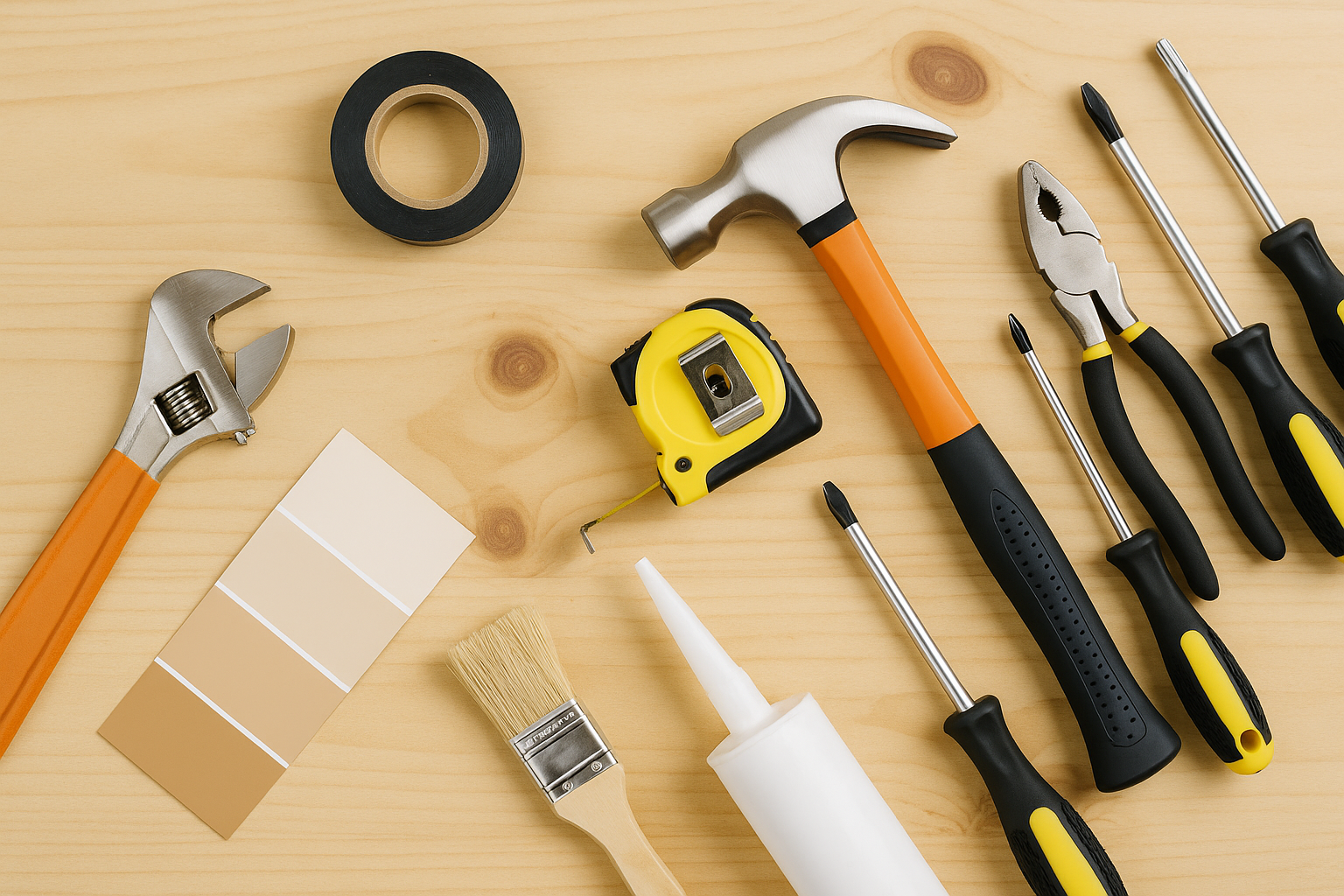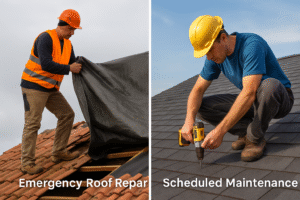Home repairs feel hard at first. Most are easier than they seem. You don’t need a lot of tools. You don’t need a big budget. You also don’t need to call someone every time something breaks.
Many small problems have simple fixes. A dripping faucet. A hinge that makes noiseA clogged drain. These don’t require a pro. They just need a few steps and the right mindset.
Doing the work yourself saves time. It also saves money. You don’t need to wait days for help. You don’t need to pay high fees. You stay in control of your home.
Start small. Fix what you can see. Tighten a loose handle. Seal a window draft. Patch a hole in the wall. These tasks build your skills. Each one teaches you something new.
Confidence grows with action. You try once. You succeed. Then you try again. Each repair makes the next one easier. Tools feel more familiar. Tasks feel less stressful.
Fixing things also feels good. You get results fast. You see the change right away. You stop the problem before it spread. Your home become safer cleaner and more comfortable.
You do not need to be an expert. You only need to begin. The rest gets easier with practice.
Fix Common Problems Fast
Small home issues cause big stress. Most have simple fixes. You just need the right steps. These common problems don’t need a pro. You can fix them fast and cheap.
1. Leaky Faucets
Leaks waste clean water. They drip all day and night. That adds to your bill. Most leaks happen inside the faucet. Old washers or seals break down over time.
Start by shutting off the water. Turn the handle to release any pressure. Use a wrench to take the faucet apart. Look for worn out rubber ring or cracked seals. Replace them with new parts from the store. These parts cost just a few dollars.
Put the faucet back together. Turn the water on again. The drip should stop. If it doesn’t, check for loose fittings. Tighten them if needed. Now your sink works better and your water bill stays low.
2. Squeaky Doors
A squeaky door gets on your nerves fast. You hear it every time someone walks in. The problem comes from friction in the hinges. That’s an easy fix.
Grab a can of WD 40 or use cooking oil. Spray or dab it directly on the hinge pins. Open and close the door a few times. The oil spreads inside the joint. The sound should stop right away.
Still squeaking? Look at the screws. Loose screw make hinge shift. Tighten them with a screwdriver. If the metal look bent or rusty swap the hinges for new one. Your door will open smooth and quiet.
3. Clogged Drains
A clogged drain makes your sink or tub useless. Water fills up fast. It drains slow or not at all. Don’t grab harsh cleaners. They can harm your pipes and release fumes.
Use a simple trick instead. Pour one cup of baking soda into the drain. Then pour one cup of white vinegar. The mix will bubble and fizz. Let it sit for 15 minute. It breaks down grime and buildup.
Boil water on the stove. Pour it into the drain after the fizzing stop. This clears the path. Your drain should work like new. Do this once a month to stop clogs before they start.
4. Drafty Doors or Windows
Cold draft sneak in through crack. They make your home feel chilly. They also push your heating system to work harder. That means higher energy bills.
Check around windows and doors. Look for gaps or loose seals. Use caulk to fill thin cracks around window frames. Add weatherstripping to the sides of doors. These supplies cost very little.
They block out cold air fast. Your home holds heat better. You stay warm. You also save money each month. Small change make a big difference.
5. Cracked Wall or Peeling Paint
Paint flakes off with time. Cracks show up from settling or moisture. These problems make rooms look messy. Guests notice right away.
Start with a scraper. Remove all loose paint. Brush off any dust. Use spackle to fill the cracks. Smooth it with a putty knife. Let it dry fully. Then sand it flat with fine sandpaper.
Wipe the area clean. Paint over it using a small roller or brush. Match the wall color. You don’t need to repaint the full wall. The repair blends in and the surface looks clean again.
Tools You Need at Home
Repairs get easier with the right tools. You don’t need every gadget. Just start with the basics.
-
Cordless Drill: Drills holes fast. Also drives screws.
-
Screwdrivers: Pick flathead and Phillips.
-
Hammer: Handles nails and minor jobs.
-
Pliers: Grip and cut small parts.
-
Tape Measure: Checks lengths fast.
-
Utility Knife: Slices boxes and ropes.
-
Level: Keeps things straight on walls.
-
Stud Finder: Finds wall studs for shelves or TVs.
-
Bucket: Carries tools or holds water.
-
Glass: Protect your eyes.
-
Gloves: Shield your hand from cuts.
-
Ladder: Reaches high place safely.
-
Ratchet Wrench: Loosen bolt and nut.
-
Knee Pad: Save your knees during floor work.
Buy a basic set. Most kits cost less than one repair visit.
Check Things Before They Break
Small problems turn big fast. A quick check now saves stress later. You don’t need tools or special training. Just look around your home and stay alert.
Start under the sinks. Look for water stains or drips. Check pipes and shutoff valves. A tiny leak today becomes major damage tomorrow.
Walk through each room. Test your outlets. Plug in a small lamp or charger. If something does not work take a closer look. Loose or dead outlets can point to bigger electrical issues.
Check your HVAC filters. Dirty filters block airflow. That makes your system work harder. Swap them every few months. Your air stays clean and your system lasts longer.
Step outside. Look at your gutters. Clear out leaves and debris. Water needs to flow away from your house. If it doesn’t, it may cause leaks or mold.
Glance at your roof. Look for missing shingles or sagging spots. Catch those signs early. Fixing a few shingles now costs less than a full roof later.
These checks don’t take long. You stay ahead of damage. You save money. You also protect your home and avoid big surprises.
Know When to Get Help
Some jobs need a pro. Avoid danger or extra costs. Call someone if:
-
The problem involves wiring.
-
Pipes burst or won’t drain.
-
The structure looks damaged.
DIY has limits. Knowing them protects your home.
Final Words
You don’t need to fix everything in your home. Some jobs take skill. Some need a pro. Still, you can handle more than you think. Most problems are not that hard.
Start small. Fix a squeaky hinge and go from there. Seal a window draft. Patch a wall crack. That first step matters. It builds momentum. It also builds your confidence.
You only need a few tools. Keep them in one spot. A screwdriver. A hammer. A wrench. A tape measure. These help with almost any small job. Having the right tools makes things easier. It also saves you time.
Watch your home closely. Look for small warning signs. A tiny leak under the sink. A strange rattle in the vent. A door that sticks. These little things often lead to bigger problems. Fix them early and avoid a big mess later.
Also, stay curious. Ask questions. Read instructions. Watch short videos. Every repair teaches you something. Each one makes the next fix easier. You get better without even trying.
Don’t wait until something breaks. Take action early. That keeps your home safe. It keeps it clean. It also gives you peace of mind. You know what’s going on. You stay in control.
You don’t need to be perfect. You just need to care. Take one step at a time. You’ll learn fast. You’ll save money. And your home will thank you.




